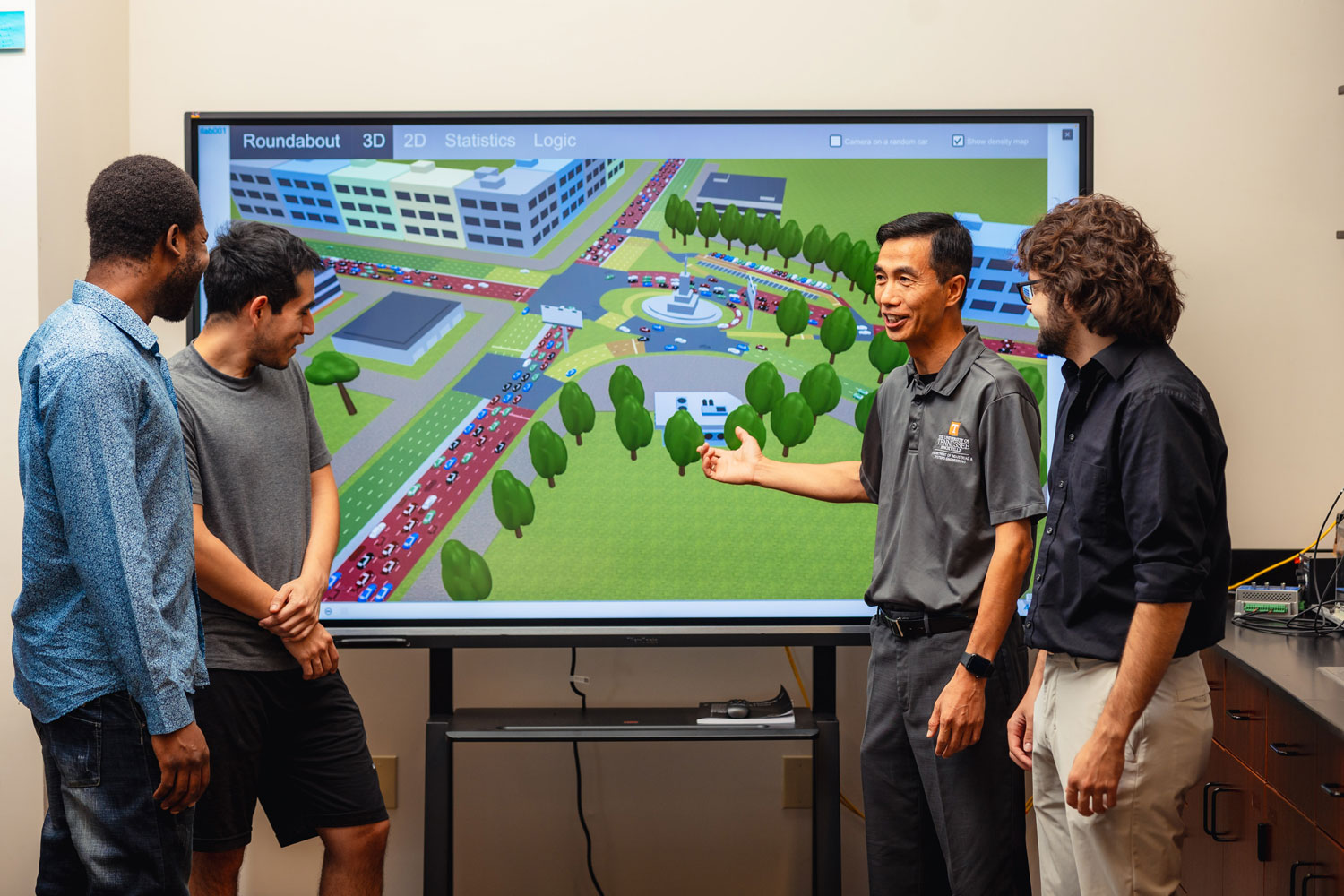Freight transportation is a backbone of the US economy—and a significant contributor to greenhouse gas emissions. Xueping Li, Dan Doulet Faculty Fellow and Professor in the Department of Industrial and Systems Engineering, cites a US Department of Transportation estimate that freight accounts for nearly 10 percent of annual US emissions.
Li and an interdisciplinary multi-institutional team have been awarded funding from the US Department of Energy to launch a first-of-its-kind national-scale undertaking to address freight’s impact on climate change—and the impact of climate change on this vital sector.
Funding from DOE’s Advanced Research Projects Agency–Energy (ARPA-E) is highly competitive. “Any company, national lab, or university in the country could apply. Only six projects were chosen this year,” Li said. “It’s so exciting to be one of the teams.”
As principal investigator, he is working alongside Assistant Professor Hugh Medal, also in ISE, and Professor Kevin Heaslip in the Department of Civil and Environmental Engineering—who directs UT’s Center for Transportation Research—in addition to UT graduate students, faculty from West Virginia University, and researchers from Oak Ridge National Laboratory.
“We want to help reduce freight’s greenhouse gas emissions and help make it more resilient to climate-related challenges and acute disruptions,” Li said. To accomplish this two-part mission, the team is developing a cognitive digital twin for the entire US intermodal transportation network, including roads, rails, and waterways.
“A digital twin,” he explained, “is a virtual representation of a physical system, like a motor or factory. With it, you conduct what-if analyses and determine how to optimize system performance.”
Digital twins are becoming mainstream in some industries, but this team is leapfrogging to the next iteration.
“With a cognitive digital twin,” Li said, “you ask your whatifs, see the impacts in the model, make changes in the physical world . . . and sensors, cameras, and other technologies feed the evolving real-world data back into the twin. You monitor the system operations, and the twin learns from new data and continues evolving.”
State transportation agencies, city planners, shipping companies, and supply chain professionals use an array of methods and models for flow planning, scheduling, and optimizing for cost efficiency. “There’s a decent chance many people still use spreadsheets or even do the work by hand,” he said. This variation limits the scale, scope, and speed of transportation planning.

The team’s cognitive digital twin will remove those limitations and enable decision-makers to understand both the tradeoffs and the synergies among competing priorities. “We want users to see all their options and how to best prioritize for time, cost, and emissions,” Li said. “They could see that a route planned for trucking could use rail more quickly and with fewer emissions. Or they could find a more fuel-efficient route for the truck that also costs less. Since this will cover the nationwide system, they’ll see how optimizing for one location or mode of transport affects the big picture.”
The twin will also serve users facing more frequent extreme weather events. “If you need to ship goods from Miami to Boston but a hurricane is coming up the coast, or it already left behind damaged infrastructure, what can you do?” Li asked.
The cognitive digital twin will quickly and effectively enable rerouting—and increased resilience.
As the twin takes shape, the team will submit a technologyto- market plan to ARPA-E. “To make an impact,” he said, “we will translate and transform our research into working prototypes available to industry partners and government agencies.” With that end in mind, the team is forming an advisory board with industry partners to guide the research and development of the cognitive digital twin.
Future mobility of people and goods is a priority area for UT’s investment in research areas that address complex, urgent real-world challenges. By earning ARPA-E funding, Li’s team will continue to advance the university’s solutions-oriented leadership in decarbonizing transportation and strengthening the systems that keep the economy running.
